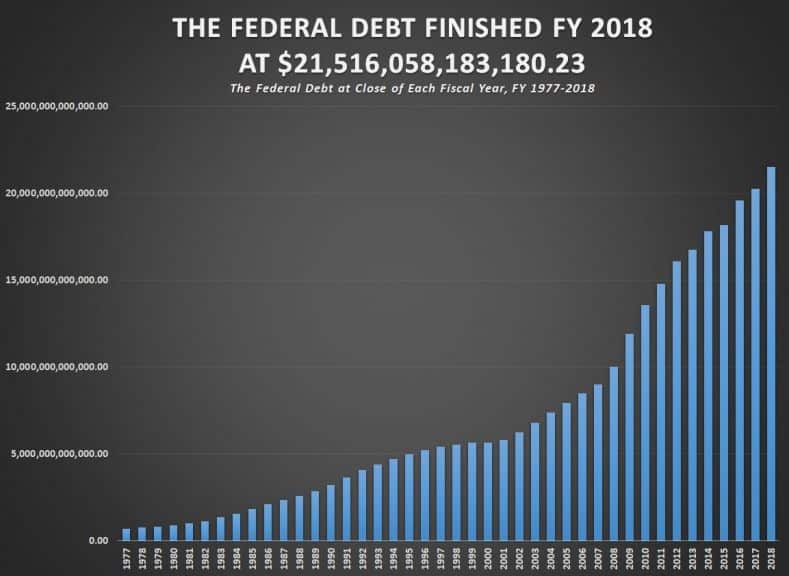WASHINGTON (Oct. 2, 2018) – America has a major spending problem. 2018 was one of the worst in history.
Sept. 30 marked the end of the federal government’s 2018 budget year. According to data released by the U.S. Treasury Department, the federal debt grew by nearly $1.3 trillion in fiscal 2018 – $1,271,158,167,126.72 to be exact. It was the sixth-largest fiscal-year debt increase in the history of the United States.
So much for that Republican Party fiscal responsibility.
The total federal debt currently stands at $21.5 trillion.
For the eighth time in the last 11 years, the federal debt has grown by more than $1 trillion. As you can see from the chart, the debt continues to spiral upward, no matter which political party controls Congress and the White House.
The largest increase in the federal debt occurred in fiscal 2009 (Oct. 2008-Sept. 2009) at the height of the financial crisis. Debt tends to accumulate faster during economic downturns. The fact that the Trump administration managed to run up near-record debt during what is supposed to be an economic boom should cause a great deal of concern.
Republican tax cuts without any corresponding spending cuts exacerbated the debt problem. We love tax relief, but ultimately we still have to pay for government. Without government relief, tax relief means little in the long term.
The U.S. government spent a record $433.3 billion in August alone, running up a monthly deficit of $214 billion. That set a monthly spending record.
That pace looks to continue. Pres. Trump recently signed an $853 billion spending bill. The Republicans still haven’t passed an actual budget. The most recent spending bill funds the departments of Defense, Education, Labor and Health and Human Services for one year. It also provides money for agencies not covered by this legislation or by a previous spending bill through Dec. 7. The piecemeal approach to spending makes it difficult to track exactly how much the federal government is spending.
CNS news calculated that the federal government ran up a debt equaling approximately $8,172 per American worker. The total federal debt comes to about $138,330 for every person in this country who works.
This isn’t about bashing one administration. The truth is for nearly the last century, there has been an undeniable, dramatic trend upward in government spending in real and in nominal terms. In fact, since 1940, average yearly federal spending has increased during every single administration – whether Republican or Democratic Party. The Trump administration is simply continuing that trend.
But don’t be fooled into thinking that voting Republican will fix the spending problem. It clearly won’t.

